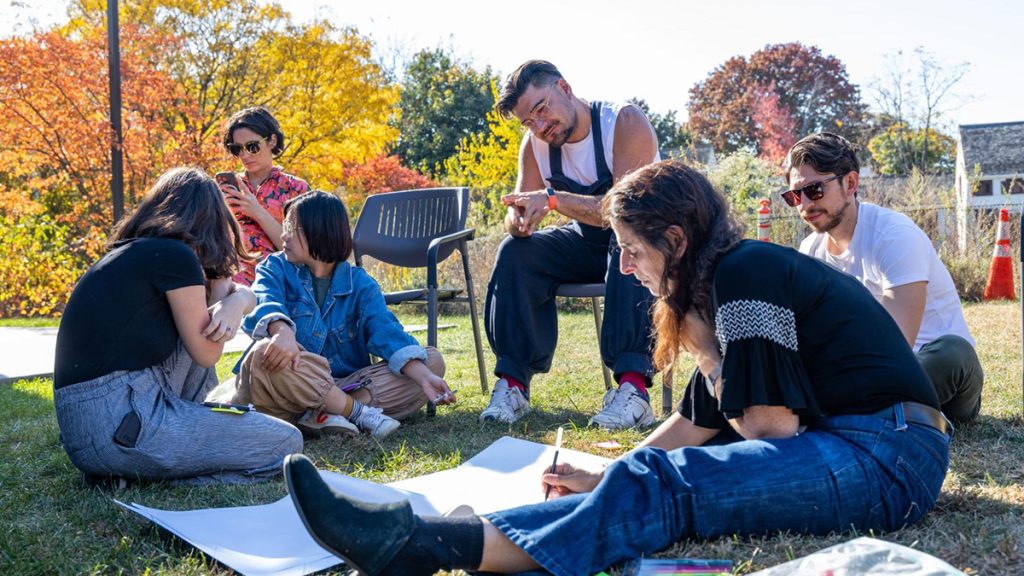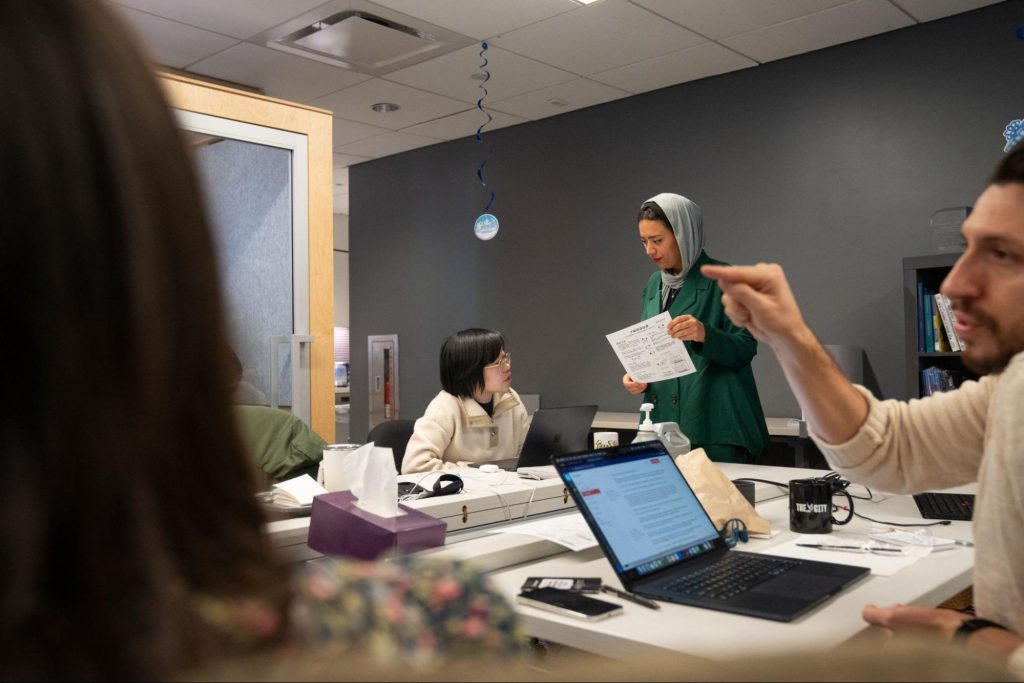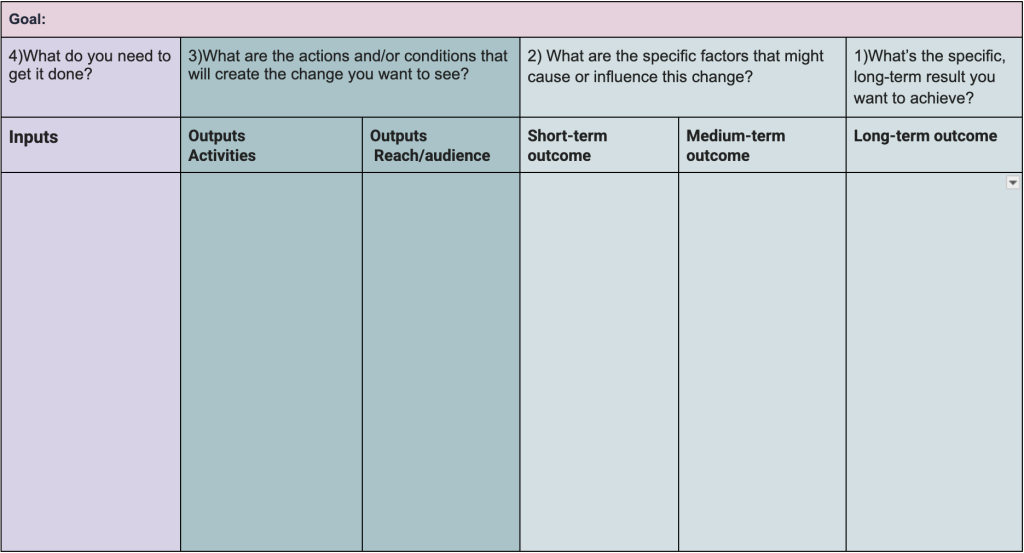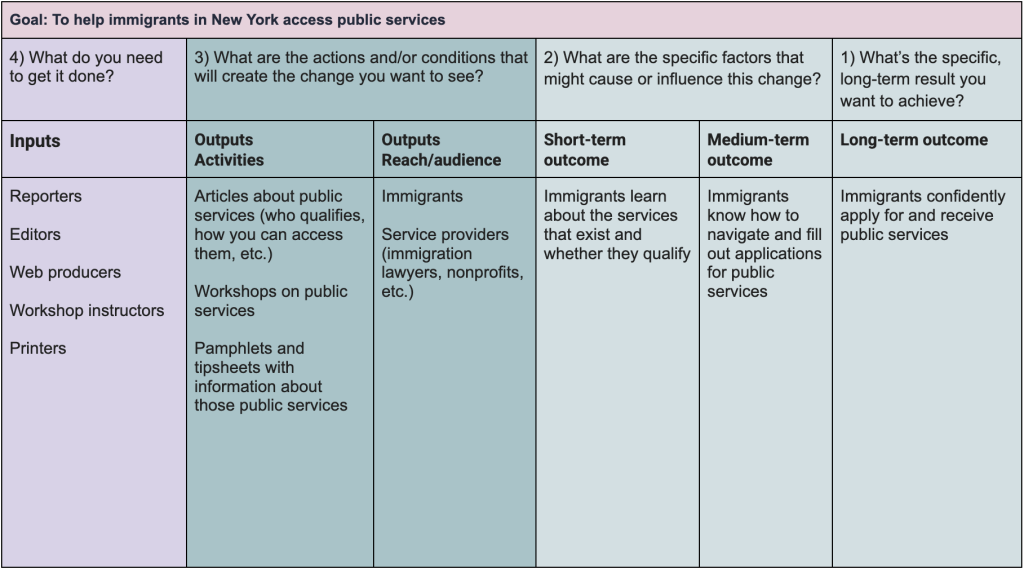
Documented journalists during a newsroom retreat (Courtesy of Documented)
Should journalists try to make change in the world?
We already are, we just don’t call it that
Journalists already do change-making work.
Newsrooms across the country provide important information about a number of aspects of public life. The hope is people will use that information to make informed decisions and participate in civic society. Investigative journalists expose wrongdoing and harm, or highlight legislative or institutional failures with the hopes that lawmakers will step in and make improvements. Countless investigative reporters cite congressional actions or the introduction of laws as “impact.”
But, what if we worked towards specific impact in the world instead of hoping that something good will come from our reporting?
Wanting democratic institutions to actually practice democratic norms, wanting residents to be able to access public services and wanting the public to clearly understand the stakes of an election — is not advocacy. That’s journalism at its best. And a theory of change can help journalists develop the moral clarity to better serve our audiences on and offline.
How journalists can adapt a theory of change
In very rudimentary terms, a theory of change is a description of what changes you hope to achieve with your work and how you hope to achieve them. It’s a focused statement, often in the form of an “if…then” structure, that allows people to formulate a desired goal and to map out what actions need to be taken to achieve that goal.
Journalists can easily adapt this formula for their work.
To start, consider the audience you’re trying to serve. You may have many overlapping audiences all with their own unique news and information needs. By reporting on — or listening to — those audiences you can start to identify the specific issues they face or the problems they’re trying to solve in their daily lives.
For instance, Documented, a non-profit newsroom covering immigration issues in New York City for years, connects directly with people actively navigating the immigration system. The newsroom has turned out both deeply-reported investigative pieces that have real-world impact and service-oriented pieces that help immigrants self advocate. For some of her work with Documented, Lam Thuy Vo has developed her own theory of change:
If reporters publish stories important to immigrants and guides on accessing public services in languages most spoken by immigrants and on platforms that immigrants already use, these immigrants will be able to discover and use public services more often.
Broken down into its components this statement:
- Identifies a clear target audience: immigrants using public services in New York City
- Sets the goal of more immigrants finding and using those public services.
- Defines the means used to achieve that goal, which is to publish guides about those services.
- Describes how the reporters want to publish this work, namely in various languages and on platforms where immigrants already are.
Reverse-engineering your newsroom goals
Having this kind of “If…then” statement also allows editors and reporters to work backwards to ask themselves important questions: For instance, what languages should be included? What kind of services might be the most important to immigrants? Whom among the very large number of immigrants in New York City might best be served with this kind of journalism? And what kind of reporters could tell these stories the best?
These are editorial decision-making questions. Finding the right answer is made much easier by having a clear goal in mind.
Service journalism and guides to important topics are a major part of Documented’s strategy, as is community engagement on platforms most used by immigrants, such as WhatsApp for Spanish-speaking immigrants, WeChat for Chinese immigrants and NextDoor for Caribbean immigrants.
Editorially, the goals expressed in the sample theory of change are also reflected in how Documented has tackled some of its investigations. Immigrants told Documented reporters that one of the biggest issues they face is employers withholding their wages. And so, reporters obtained and published a searchable database of employers who have committed wage theft and did workshops helping immigrants identify wage theft.
Using a logic model
A logic model (template here) offers a structured way of reverse engineering what resources and products you need based on your desired goal. It is a visual representation of your theory of change and all the steps you might need to take. It helps make assumptions explicit about how change will happen. It also maps out pathways for your desired change and helps make sure everyone is on the same page, and provides a mechanism to hold all stakeholders accountable.
In many ways, a logic model can serve as a guidepost to keep the work on track, communicate duties and to help you know where to invest time and resources.
Though there are various versions of a logic model, we have created one that helps journalists determine the following:
- Your goals (short-term, medium-term, long-term)
- Outputs
- Resources needed
- Metrics for success
We would love to hear from your efforts to experiment with journalism-based change-making. Feel free to fill out this survey to stay in touch or to book some time with Nicole.
Cite this article
Vo, Lam Thuy; and Lewis, Nichole (2025, Aug. 27). Should journalists try to make change in the world?. Reynolds Journalism Institute. Retrieved from: https://rjionline.org/news/should-journalists-try-to-make-change-in-the-world/




